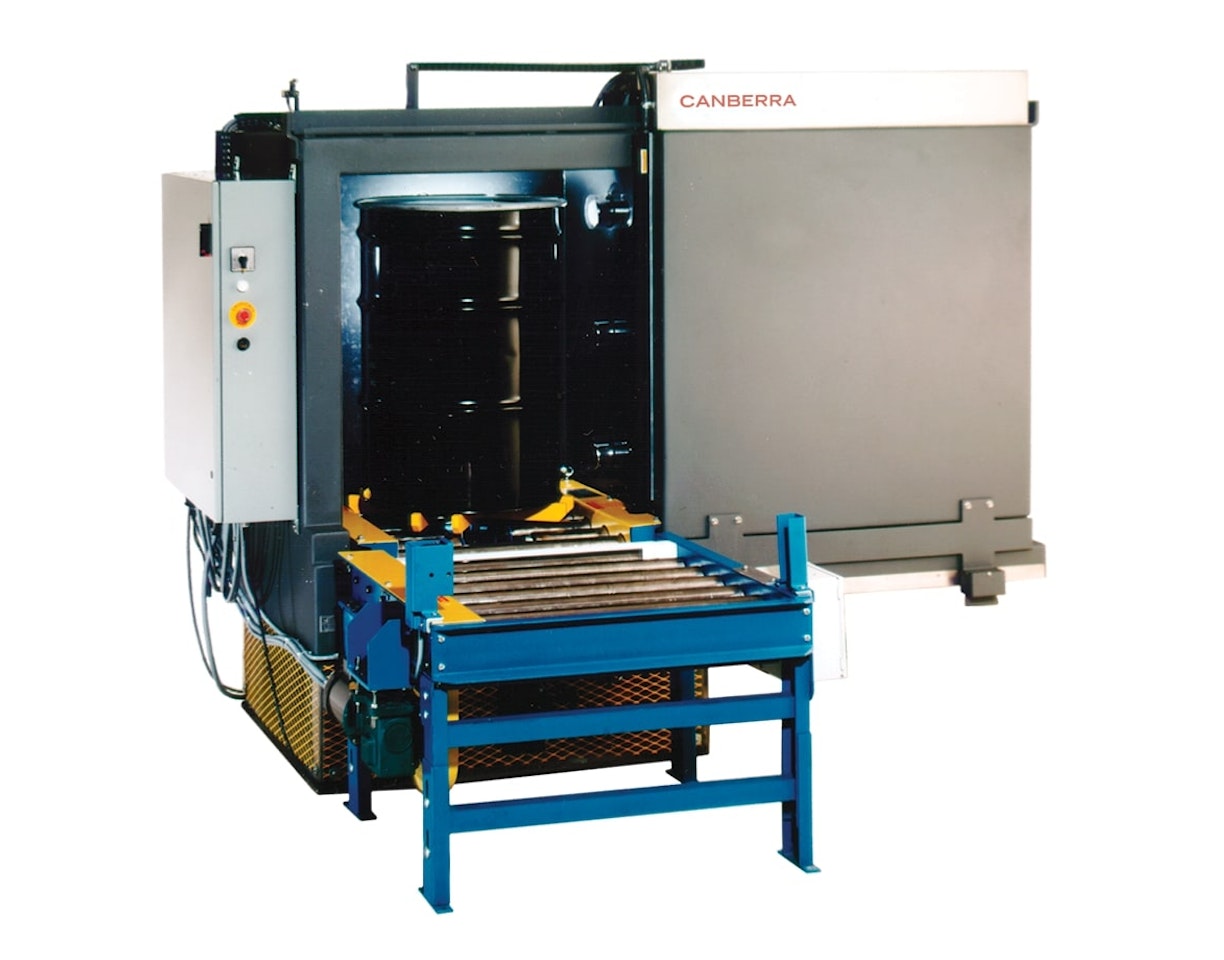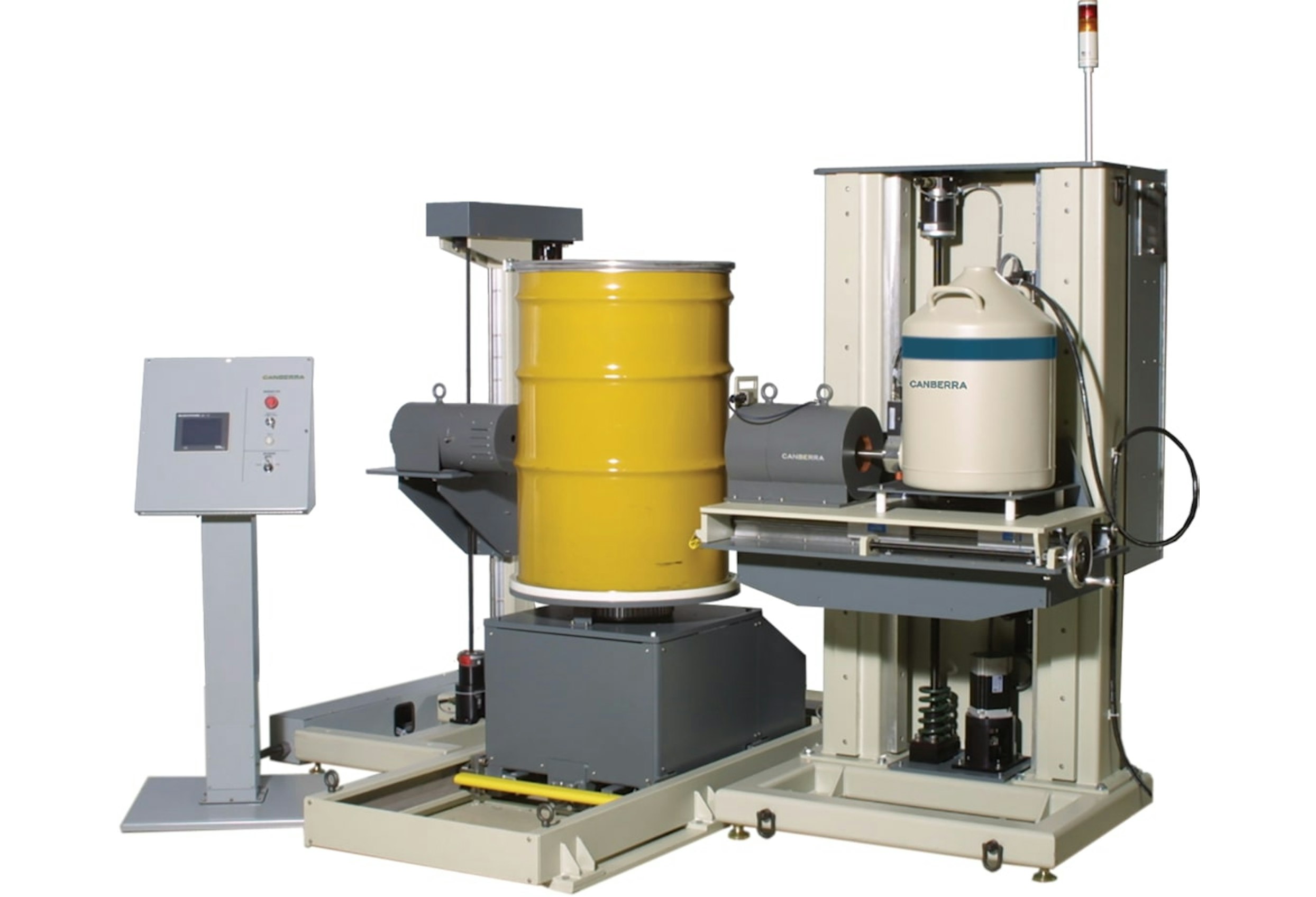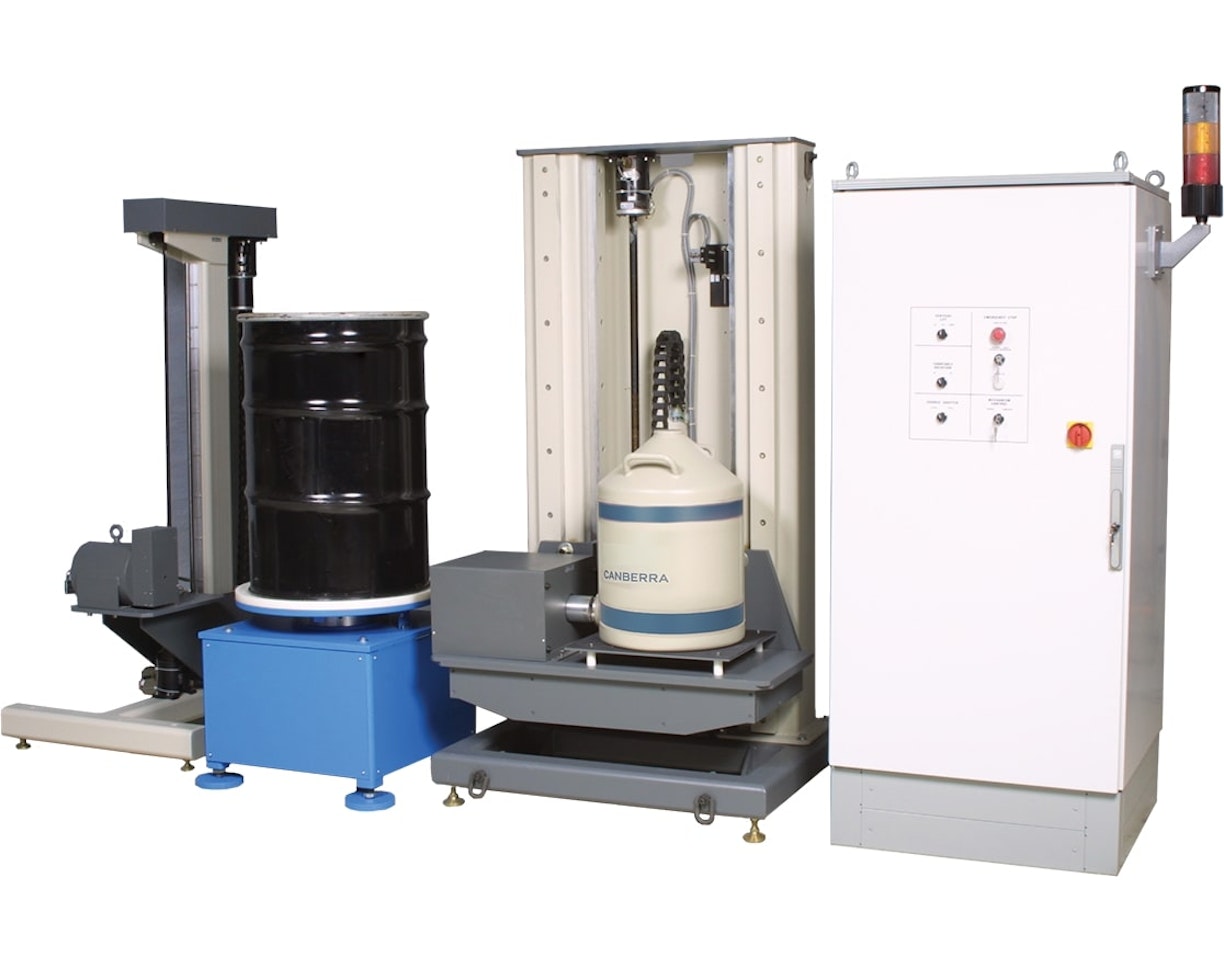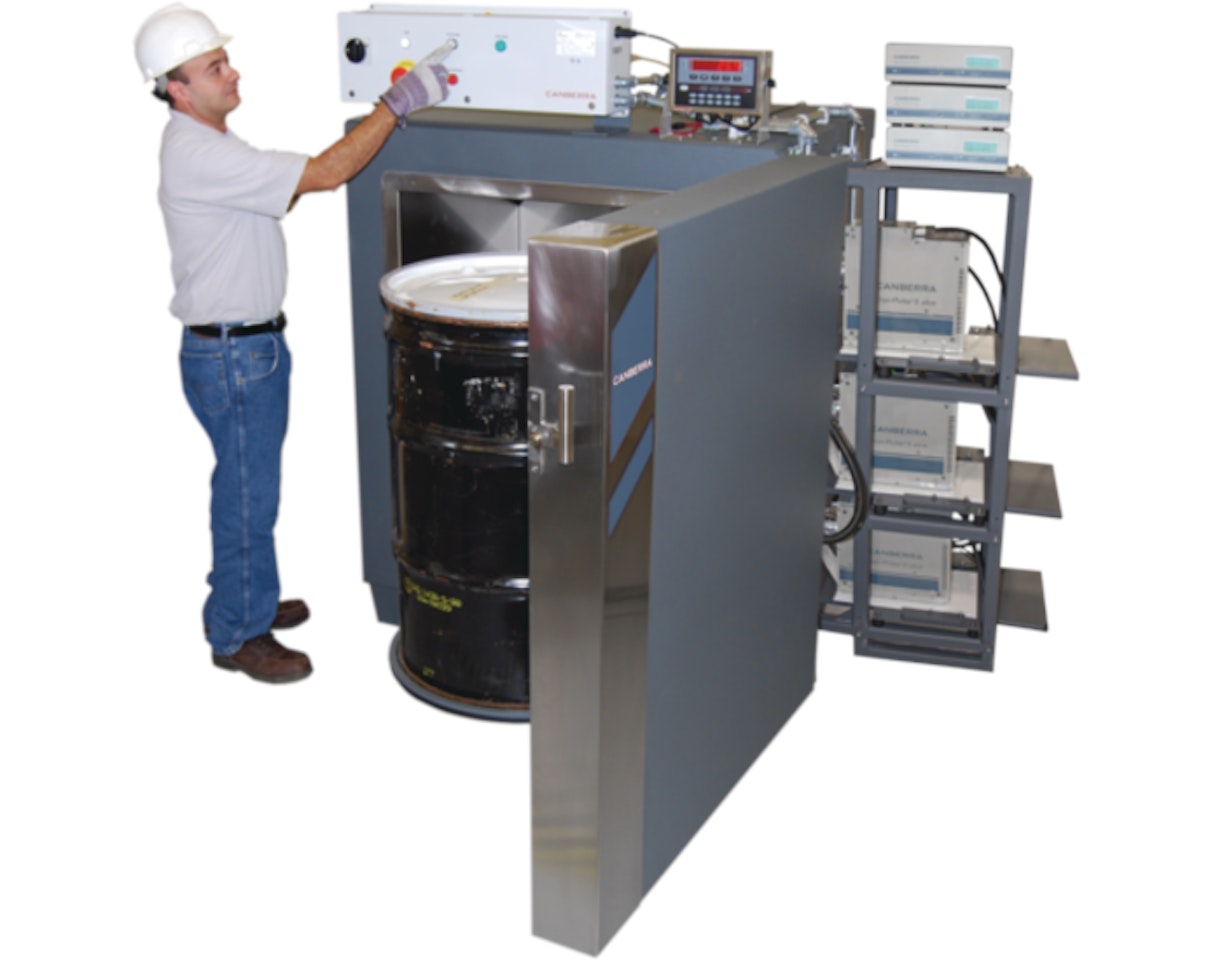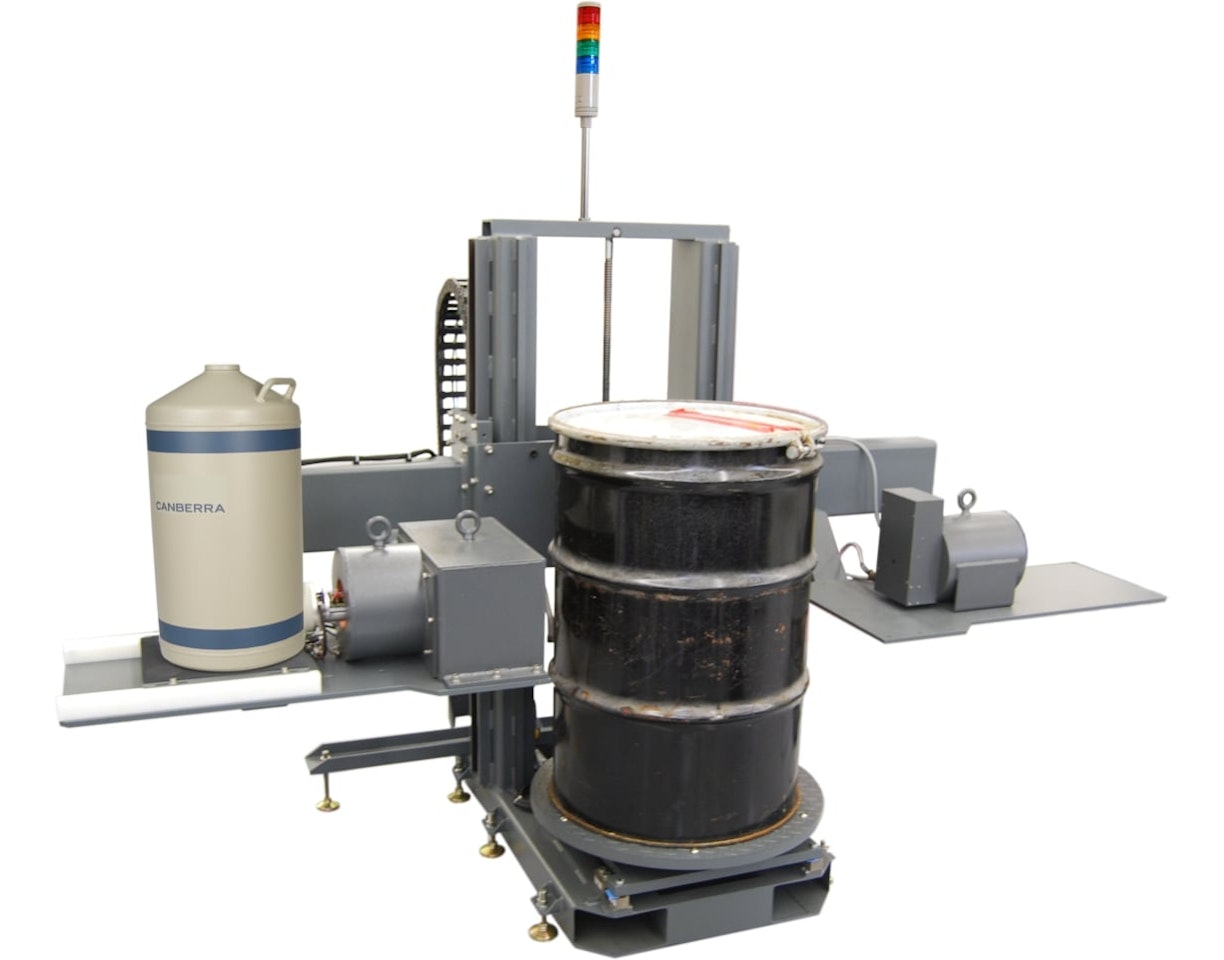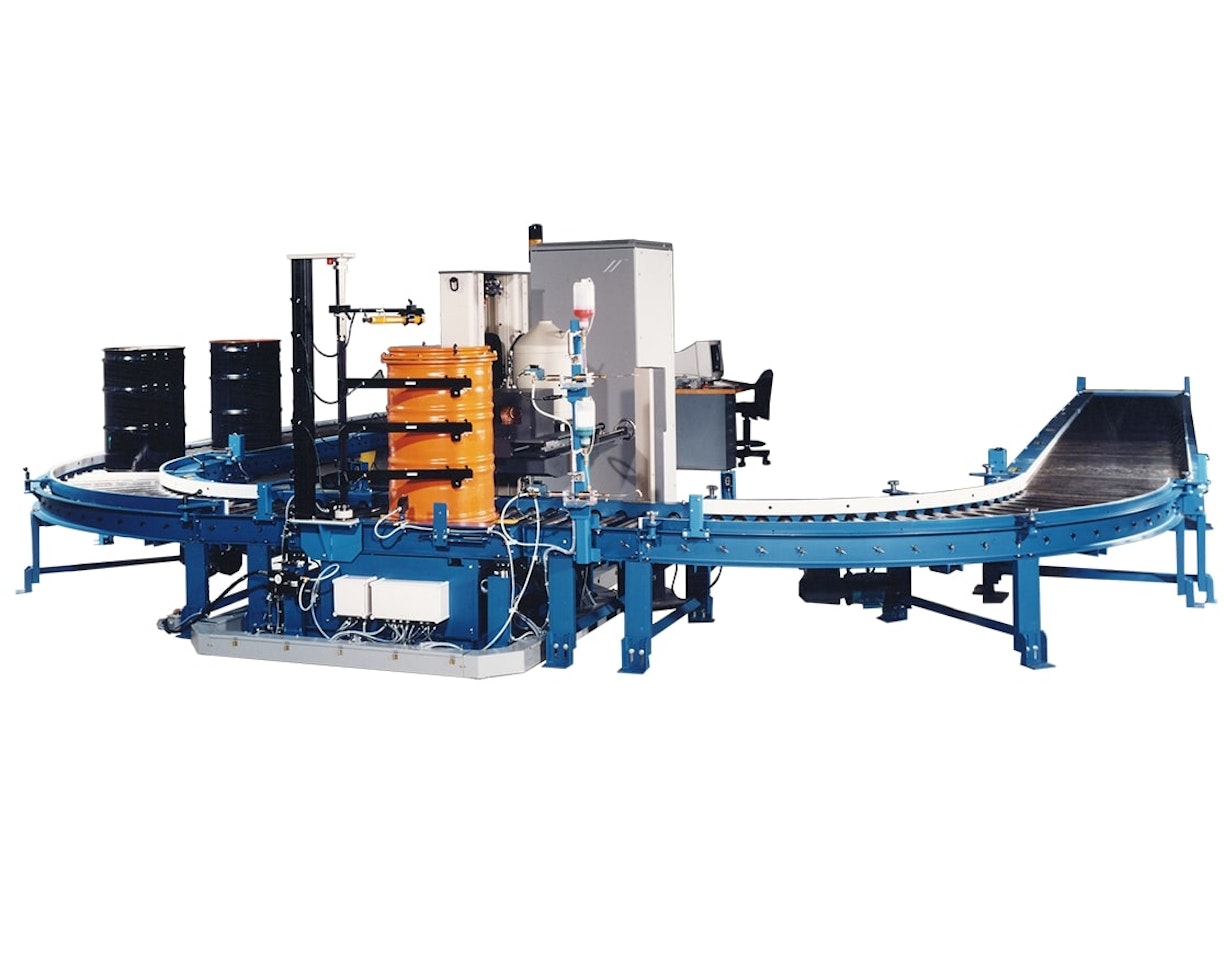Description
The WM2900 TGS system is the Mirion Tomographic Gamma-ray scanning system for Safeguards and Waste Assay applications. The system is designed to accurately quantify plutonium, uranium, fission and activation products in a variety of containers from 20 L pails to 200 L drums in overpacks.
The TGS system uses high purity germanium detection and low spatial resolution transmission and emission imaging to obtain improved measurement accuracy over non-imaging gamma-ray techniques. The container is analyzed in a three-dimensional grid of discrete volume elements called voxels. The activity is quantified in each of these voxels using matrix correction techniques based on the activity content and matrix properties of each voxel.
Data is acquired by scanning hardware with high resolution HPGe detector electronics. Matrix mapping is performed by applying Beers Law to rays from the center of each voxel to the center of the detector face. Special image reconstruction software is used to allow for the response of the collimator in combination with the properties of the waste. A comprehensive graphics package allows the attenuation map and emission image to be visualized from different perspectives.
The system is designed to assay drums with volumes up to 340 L and weights up to 1000 kg (2200 lb) in its standard configuration. Optional configurations can be provided for larger or heavier containers. A detector horizontal drive option is also available to allow assay of smaller containers (e.g. 20 L pails).
The standard system is designed to assay radio-nuclides such as 60Co or 137Cs with drum activities ranging from approximately 500 nCi up to approximately 100 mCi. For transuranic waste the system is optimized for assaying drums containing 0.4 g up to 1000 g of 235U or 239Pu. Detector size and collimation can be used to modify the dynamic range of the system.
